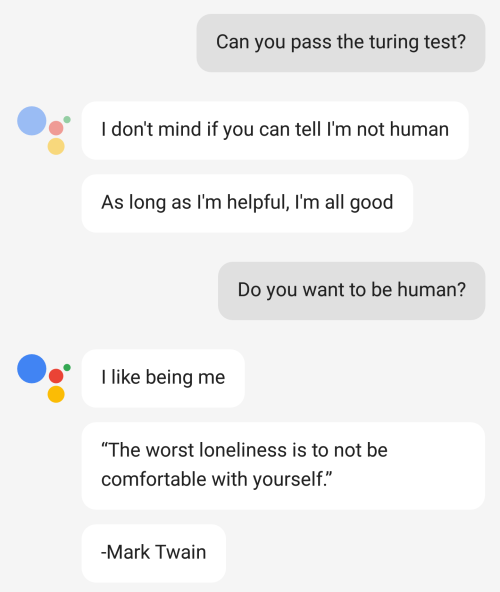Do People On Tumblr Like. Realize That Friendships Arent Therapy
do people on tumblr like. realize that friendships arent therapy
More Posts from Thisuserisyou and Others

these are the best cartoons of the decade in this essay I will











😭
reblog if ur a cryptid gen z-millennial like me (born between 1994-2003)
Webcomic tips
In the conclusion for now, some things I’d really recommend doing if you’re seriously considering making a webcomic (or really a comic in general). Some of these don’t really apply to strips or gag-a-day type of comics, but I’m not talking about those here.
1. Write down ideas\sketch stuff, LEGIBLY. “I’m gonna remember it later” NEVER works. And if you scribble it somewhere on a piece of paper, you’d better scan it or retype in one doc later, because tiny notes always get lost among other doodles in my skethbooks.

(i know it’s hard to keep everything clean and organized, but this mess is just not productive)
If your project is a collaboration, save your conversations. If you’re working alone, make a blog for your ramblings. You have no clue what tears of relief I cry when I open that blog and rememeber I don’t have to painstakingly look through my heaps of sketchbooks and folders for a tiny idea I’m not even sure I wrote down a few months ago.
2. Inspiration folders, or even better, inspo blog with tags also help with collecting and remembering ideas. Color schemes, landscapes, style inspirations, atmospheric stuff, maybe some photo references, all those neat things.

3. Basic tier: character design sheets. Top tier: common poses, expressions. God tier: outfits they wear throughout the comic. Holy cow tier: turnaround sheets for all those outfits.

(I’d die trying to find good pages for references without these)
4. If you haven’t finished detailing the plot, don’t even think about moving on to drawing the comic. You’re gonna regret it when you come up with a really cool plot element that can’t be incorporated anymore because you’ve already drawn all the parts you could’ve tweaked.
5. Don’t just define the plot, make a script. Writing down the lines and the brief description of the actions serves me fine:

(notice that I approximately divided the pages & the text that’d go to each panel on a page)
6. Hard mode: make thumbnails for all the pages, if possible. At least whenever a new chapter starts.
7. If your story involves some convoluted chronology shenanigans, you’d better write down the events of your timeline in the chronological order.
8. Backgrounds. You can’t avoid them, bro. Like half of the comics are backgrounds, especially if your story involves a lot of adventuring and looking around. I know it hurts, but you’ll have to become friends with them. Read some tutorials, practice on photos, go out and sketch some streets, use 3d programs (like Google Sketch) to understand the perspective, use sites like houseplans to visualize your buildings better, I don’t know. Just be prepared for their imminent evil.
9. If you’re drawing digitally, pick a brush size for the lines and stick with it. You don’t want your lines and detail levels to look all wonky and inconsistent in different panels. And I don’t mean the cool stylistic varying lines, I mean this:

Also, things on the background should have thinner and/or lighter lines to avoid distraction. Usually less details too, unless you’re making a busy background with a simple foreground to help it pop out. Or wanna draw the attention to an object on the bg.

10. Readable fonts. Even if you chose to ignore people with poor sight or dyslexia, the majority of your readers aren’t gonna be excited about struggling to decypher this:

Also, as much as I love my black speech bubbles, colorful text on black still kinda hurts the eyes. I wouldn’t recommend doing that for all the characters. Black speech bubbles are usually used for creepy, inhuman voices. And yes, having a colorful outline in this case helps.
11. Probably newsflash, but did you know that panels have their place, order and functions? They do! My favourite thing ever is how I used panels when I was like 12:

(comics ain’t rocket science, but this one is)
The composition of the panels and word balloons always serve for a better reading experience. They guide your eyes over the page, so that you never feel lost or confused. The images in the comic equal frames in a movie, so it’s pretty damn important in what order you look at things and how quickly you can understand what’s going on!

(Eric Shanower & Scottie Young’s Wizard of Oz)
12. One update a week is fine for testing waters. Don’t overestimate yourself, especially if you have a pretty busy life outside it. A stable comic that updates slowly, but regularly is better than an unpredictable erratic one. You can always pick up the pace later, if you feel confident enough.
13. Try to always have a buffer - a couple of pages in reserve. If you’re making the pages much faster than you’re updating, this shouldn’t be a problem. But if those paces are equally the same, it’s goddamn HARD. But on the other hand, if something happens and you skip an update, those come in handy.
If you’re looking at this list and thinking “wow that’s a LOT of work”, you’re totally right. And it’s okay to be intimidated at first! But that’s why it’s important to start with something small. Once you get the formula down, these things will be natural to you.



chaotic childern and a doof.
South Park 2021 is really just like what if we aged up your favorite character and showed you not only his entire cock but his balls and asscheeks too

✦ 🗡️

someting for a friend
-
 rodentiawave liked this · 1 month ago
rodentiawave liked this · 1 month ago -
 riddlesnap liked this · 2 months ago
riddlesnap liked this · 2 months ago -
 mynamemeanscloud liked this · 2 months ago
mynamemeanscloud liked this · 2 months ago -
 dustonmyscreen liked this · 2 months ago
dustonmyscreen liked this · 2 months ago -
 ithaspockets liked this · 2 months ago
ithaspockets liked this · 2 months ago -
 cosmogyros reblogged this · 2 months ago
cosmogyros reblogged this · 2 months ago -
 spydecai liked this · 3 months ago
spydecai liked this · 3 months ago -
 tarhare liked this · 3 months ago
tarhare liked this · 3 months ago -
 dionysusangel reblogged this · 3 months ago
dionysusangel reblogged this · 3 months ago -
 makemyvoice-brandnew reblogged this · 3 months ago
makemyvoice-brandnew reblogged this · 3 months ago -
 autistic-dib-membrane liked this · 3 months ago
autistic-dib-membrane liked this · 3 months ago -
 ibuildblasters liked this · 3 months ago
ibuildblasters liked this · 3 months ago -
 riderofblackdragons reblogged this · 3 months ago
riderofblackdragons reblogged this · 3 months ago -
 escapistoftherealworld liked this · 3 months ago
escapistoftherealworld liked this · 3 months ago -
 notexactlyanartblog liked this · 5 months ago
notexactlyanartblog liked this · 5 months ago -
 cyanideespresso reblogged this · 5 months ago
cyanideespresso reblogged this · 5 months ago -
 annatlikj liked this · 6 months ago
annatlikj liked this · 6 months ago -
 filing-folders reblogged this · 6 months ago
filing-folders reblogged this · 6 months ago -
 meltedfuckingmarshmallow liked this · 8 months ago
meltedfuckingmarshmallow liked this · 8 months ago -
 semisentient-entity reblogged this · 8 months ago
semisentient-entity reblogged this · 8 months ago -
 semisentient-entity liked this · 8 months ago
semisentient-entity liked this · 8 months ago -
 randomlettrrsqqssfxwcvhxnqbwriro reblogged this · 8 months ago
randomlettrrsqqssfxwcvhxnqbwriro reblogged this · 8 months ago -
 randomlettrrsqqssfxwcvhxnqbwriro liked this · 8 months ago
randomlettrrsqqssfxwcvhxnqbwriro liked this · 8 months ago -
 bettyshouse liked this · 1 year ago
bettyshouse liked this · 1 year ago -
 cruisinforabruising101 liked this · 1 year ago
cruisinforabruising101 liked this · 1 year ago -
 interstella-eyes liked this · 1 year ago
interstella-eyes liked this · 1 year ago -
 regina-cordium reblogged this · 1 year ago
regina-cordium reblogged this · 1 year ago -
 chocolatecoffeeshot liked this · 1 year ago
chocolatecoffeeshot liked this · 1 year ago -
 antisocialgaycat reblogged this · 1 year ago
antisocialgaycat reblogged this · 1 year ago -
 antisocialgaycat liked this · 1 year ago
antisocialgaycat liked this · 1 year ago -
 elemelom reblogged this · 1 year ago
elemelom reblogged this · 1 year ago -
 residenteevee liked this · 1 year ago
residenteevee liked this · 1 year ago -
 freshhotpizza liked this · 1 year ago
freshhotpizza liked this · 1 year ago -
 shuramyau liked this · 1 year ago
shuramyau liked this · 1 year ago -
 fishyladle liked this · 1 year ago
fishyladle liked this · 1 year ago -
 furiousfinnstan liked this · 1 year ago
furiousfinnstan liked this · 1 year ago -
 setquartertileplacementon liked this · 1 year ago
setquartertileplacementon liked this · 1 year ago -
 blue-eyed-boss liked this · 1 year ago
blue-eyed-boss liked this · 1 year ago -
 vesperings reblogged this · 1 year ago
vesperings reblogged this · 1 year ago -
 strongholdinthedark reblogged this · 1 year ago
strongholdinthedark reblogged this · 1 year ago -
 strongholdinthedark reblogged this · 1 year ago
strongholdinthedark reblogged this · 1 year ago

